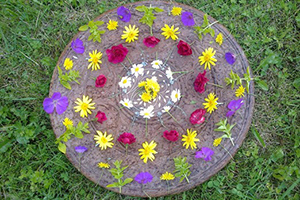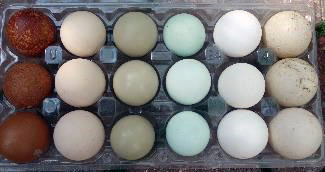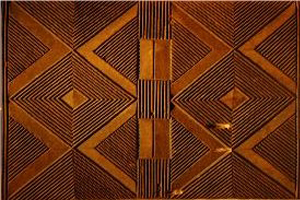
Early childhood mathematics
Understandings of pattern and structure develop from a very young age. Experiences such as sorting and classifying are often the beginnings of pattern investigation (Miller, 2019). Activities that involve kinaesthetic movement, concrete manipulatives, space, pictorial representations and numbers are also powerful ways of exploring patterns (Warren, Miller & Cooper, 2012), and even very young babies recognise patterns in familiar songs or regular movements (Montague-Smith & Price, 2012).
An understanding of patterning underpins the development of many mathematical concepts.
For example, pattern and structure form the basis of algebraic thinking, and the use of repeated units to measure or represent data (MacDonald, 2018; Miller, 2019). Research suggests that, from a conceptual point of view, it is important for children to be able to identify repeating units — that is, the structure of a pattern (Miller, 2019). Understandings of structure help children to develop relational understandings of mathematical concepts and transfer knowledge across concepts (Warren & Miller, 2013), and patterning skills in early mathematics have been shown to positively impact children’s later mathematical achievement (Papic, 2007).
Pattern and structure
From a mathematical perspective, a pattern can be defined as any predictable regularity, usually involving spatial, numerical or logical relationships (Mulligan & Mitchelmore, 2009). Patterns are based on structure, which can be defined as the relationship between elements (Warren & Miller, 2013). Children develop awareness of pattern and structure through recognising patterns, copying patterns, continuing patterns, and creating patterns:
- Recognising patterns involves awareness of different forms of patterns and identifying the items which make up the pattern structure.
- Copying patterns requires children to decompose the pattern (break it up into its individual parts) and match those parts one-for-one.
- Continuing patterns is about knowing what comes next. To do this, children need to be able to recognise the structure of the pattern.
- Creating patterns enables children to explore the many different attributes and structures of patterns. The creation of patterns reinforces the elements of structure and repetition for children (MacDonald, 2018).
Types of patterns
There are lots of different ways that children can recognise, copy, continue, and create patterns. However, patterns tend to take one of the following forms:
- Repeating patterns have a structure that is made up of repeating sequences of items. These repeating sequences may have different layouts, e.g. linear, circular, repeating rows or columns, or diagonal.


- Growing patterns have a similar relationship between one element and the next, but the shape or number increases or decreases in size.

- Symmetrical patterns are formed using reflective or rotational correspondence, i.e. items that “mirror” one another.
- Arrays are arrangements of rows and columns with equal numbers in each row and equal numbers in each column. Arrays may be structured using elements of the other three pattern forms (MacDonald, 2018; Montague-Smith & Price, 2012).

QKLG: Confidence and interest in exploring patterns and relationships
Building children’s confidence and interest in exploring patterns and relationships is a significant learning area in the QKLG. Within this learning area, children build their skills in recognising repetition, and copying or continuing repetitions to create patterns.
Educators can help build children’s confidence and interest in exploring patterns and relationships when they support children to make connections to patterns in everyday environments. For example:
- Play a variety of music and ask children to identify different pitches or the sounds of different instruments. Encourage them to notice how these repeat throughout the music. Ask them to consider how patterns are used to create different rhythms or melodies.
- Use songs or story books to identify repeating elements, such as a repetitive chorus or series of phrases in a story. Encourage children to use these repetitions to predict what comes next in the song or story.
- Notice the incidental opportunities to explore patterns. For example, sharing a plate of fruit is a great stimulus for shared conversations about repeating patterns (“Let’s eat the fruit in a pattern: apple, banana, kiwifruit; apple, banana, kiwifruit…”). Try to keep these conversations as natural and playful as possible. The idea here is not to turn fruit time into direct instruction, but rather to capitalise on everyday opportunities to notice and talk about patterns.
- Look for ways to consolidate the ideas about patterning you explore throughout the day. For example, you might use similar provocations when sharing fruit and when packing away toys. Transitions throughout the day present great opportunities for noticing repetitions and patterns.
- There are many opportunities to notice repeating, growing and symmetrical patterns in nature. Have a look around your service’s yard or a local park — what do you notice about the leaves, flowers, bark?
- Built and designed environments offer similar possibilities for exploring pattern and structure. What types of patterns can you see in architecture, building materials, and textiles? How are repeating, growing, and symmetrical patterns and arrays represented in mechanical and engineered forms?
Reflection
- What opportunities do I provide for children to develop awareness of pattern and structure in different contexts (e.g. routines, transitions, music, stories)?
- Do I plan opportunities for children to explore different pattern types?
- How can I assess and document children’s understandings of patterning?
This article is also available as a PDF.
- Circular repeating pattern image, Solstice flower mandala 2011 by Heather flickrCC BY 2.0
- Growing pattern image, Wooden blocks in shape of a ladder, business growth concept 2021 by Marco Verch Professional Photographer flickr CC BY 2.0
- Reflective symmetry image, African carved door pattern, De Young museum, San Francisco, California, USA 2008 by Wonderlane flickr CC BY 2.0
- Rotational symmetry image, Snowflake 2021 by Alexey Kljatov flickr CC BY 2.0
- Array image, Rainbow 2012 by Rebecca Siegel flickr CC BY 2.0
Reference list
MacDonald, A 2018, Mathematics in early childhood education, Oxford University Press, South Melbourne, Victoria.
Miller, J 2019, ‘STEM education in the primary years to support mathematical thinking: Using coding to identify mathematical structures and patterns.’ ZDM Mathematics Education, vol. 51, no. 6, pp. 915–927, https://doi.org/10.1007/s11858-019-01096-y
Montague-Smith, A & Price, A.J 2012, Mathematics in early years education, 3rd edn, Routledge, New York.
Mulligan, J & Mitchelmore, M 2009, ‘Awareness of pattern and structure in early mathematical development.’ Mathematics Education Research Journal, vol. 21, no. 2, pp. 33–49, https://doi.org/10.1007/BF03217544
Papic, M 2007, Mathematical patterning in early childhood: An intervention study (unpublished PhD thesis), Macquarie University, http://hdl.handle.net/1959.14/215382
Warren, E & Miller, J 2013, ‘Young Australian Indigenous students’ effective engagement in mathematics: The role of language, patterns, and structure.’ Mathematics Education Research Journal, vol. 25, no. 1, pp. 151-171, https://doi.org/10.1007/s13394-013-0068-5
Warren, E, Miller, J & Cooper, T 2012, ‘Repeating patterns: Strategies to assist young students to generalise the mathematical structure.’ Australasian Journal of Early Childhood, vol. 37, no. 3, pp. 111–120, doi:10.1177/183693911203700315




